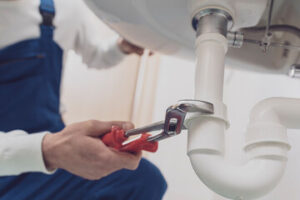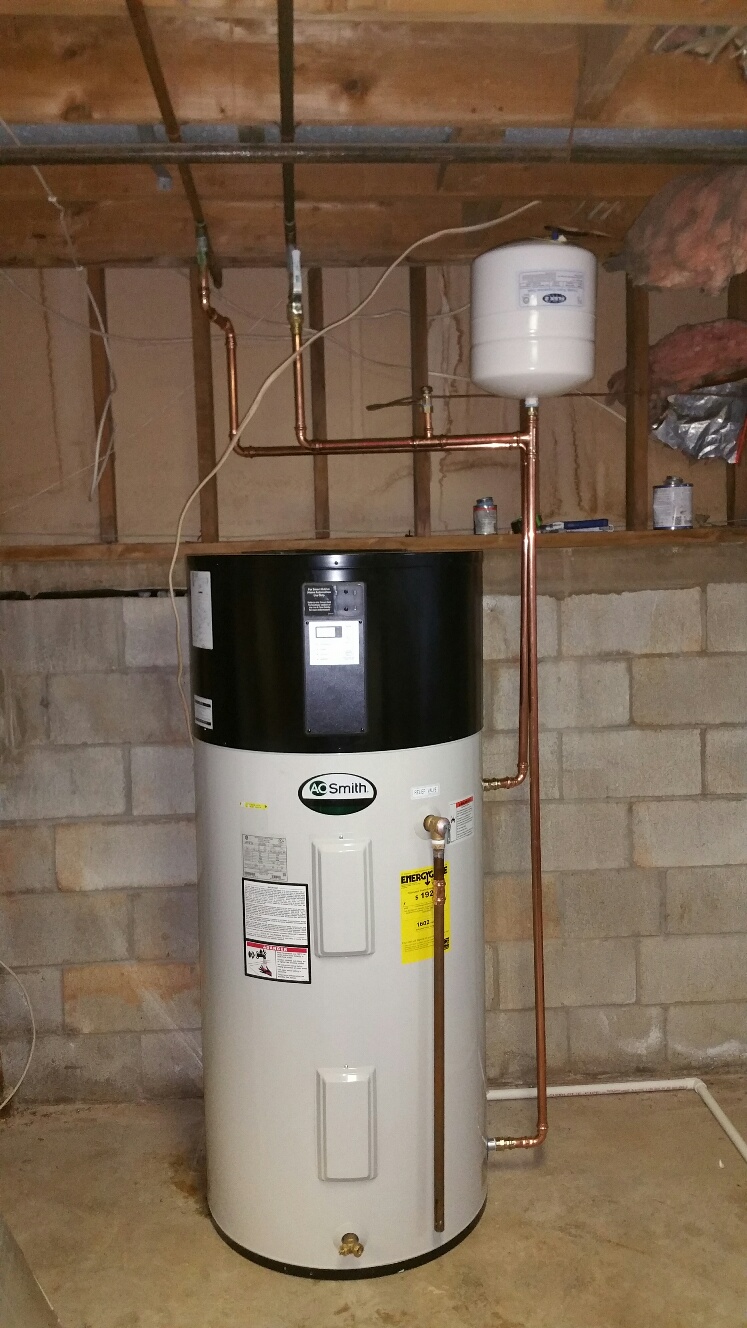Many plumbing problems can be solved by homeowners with some simple tools and materials. However, some problems require the attention of a professional plumber at Spring Plumbing to ensure they don’t worsen. Leaking pipes may leave puddles in your home, cause water damage to walls and ceilings, or emit strange sounds. Fortunately, repairing these leaks is relatively straightforward.
 Pipe leaks can be a serious problem and will likely require professional attention for long-term repair. The best way to deal with them is to catch the leak early and stop the water before any major damage occurs. This is why it’s important to pay attention to any changes in your home that could indicate a problem with a water pipe, such as water leaking from a ceiling or floor, or mold or mildew around a drain or in a wet area of your house.
Pipe leaks can be a serious problem and will likely require professional attention for long-term repair. The best way to deal with them is to catch the leak early and stop the water before any major damage occurs. This is why it’s important to pay attention to any changes in your home that could indicate a problem with a water pipe, such as water leaking from a ceiling or floor, or mold or mildew around a drain or in a wet area of your house.
Water pipes run throughout your home and handle a lot of pressure, temperature fluctuations and usage. The pipes in your house can be made from a variety of materials, including galvanized steel, copper, PVC and ABS. Older homes may have galvanized steel pipes which can corrode or break easily and often require more frequent water pipe repair than other types of pipes.
Leaking pipes can cause a number of problems, including water stains on ceilings and walls, mold and mildew growth and structural damage to your home. Water leaking from pipes can also lead to foundation problems, which can become very expensive to fix.
There are many ways you can fix a pipe leak, but they all tend to be temporary fixes until you can have the pipe replaced by a plumber. Some of the most common methods include using tapes, putty or pipe clamps. You can also use epoxy putty or resin cloth for a more permanent solution. The first step with either method is to clean the pipe and sand the surface, ensuring that no water can reach the leak.
A leaking pipe can cause a lot of damage to your home, so it’s important to address it as quickly as possible. If you notice a leaking pipe, shut off the water valve near it (if possible), and turn off any electrical outlets in the area. You should then take steps to remove any water that has accumulated, such as using a wet/dry vacuum or moving flooded items to a dry location.
If you notice a water stain on your wall or floor, this is a sign of a leaking pipe that should be repaired immediately. The longer you wait to have this issue dealt with, the more water and potential mold and mildew you’ll be facing.
Drains are designed to take water and waste away from your home, but they can become blocked with debris over time. Blocked drains can cause flooding and other damage, so it’s important to get them fixed as soon as you notice them. If you’re not sure what’s causing your blockage, it’s best to call a plumber as they will be able to assess the problem and recommend the right solution.
There are many reasons why a drain might be blocked, from a build-up of hair and grease to foreign objects that have been dropped down the drain. While some of these things can be hard to avoid, there are a few easy steps you can take to help prevent them from happening in the first place.
One of the most common causes of blocked drains is a build-up of grease and fat. When these substances are washed down the drain, they can start to harden and stick to the inside of the pipe walls. This can stop the water flow and cause a blockage.
Another cause of blocked drains is the build-up of soap scum. This is caused by the natural reaction of hot water and detergents with the fats and oils in the drain. While this is usually a minor issue, it can be difficult to remove and can lead to severe blockages if left untreated.
It’s also common for drains to become blocked due to cracked or damaged pipes. This is often the result of erosion or tree roots, and can be a serious problem for your home. It’s important to have your drains checked regularly and have any issues repaired as soon as possible to avoid major problems.
Getting your drains regularly cleaned by a professional plumber is also a great way to keep them in good condition. This can help to remove any blockages and clean out the pipes, preventing them from becoming blocked in the future. A professional plumber can also recommend a maintenance plan to keep your drains working properly. This may include drain cleaning, regular inspections, and other services.
Occasionally, your sink faucet will experience blockages, which can cause low water pressure and even a lack of water flow altogether. These are often due to a build-up of minerals and soap scum, which can be easily fixed by unscrewing the aerator and soaking it in vinegar. In some cases, you may need to use a toothbrush to scrub the components and remove any stubborn deposits. If your faucet is still not providing sufficient water flow, you should consider calling a plumbing service to examine your pipes for further problems.
Another common cause of low kitchen faucet water pressure is a blocked valve cartridge. These are the round discs that you can find on certain styles of faucets. They are designed to regulate water flow, but they can become clogged with debris and mineral deposits over time, restricting your faucet’s water volume and flow. In many instances, this issue can be resolved by following the instructions in your faucet’s owner manual to dismantle the cartridge and clean it out.
If you’re unable to fix your faucet with this method, it may be time to replace the cartridge. However, if the problem is more serious than this, it’s important to call a plumber to avoid further damage to your home and water lines.
If you’re not sure where the problem lies, start by shutting off your water supply and examining each component individually. If you can’t see any substantial buildups of mineral deposits, it’s likely that the problem is elsewhere. You may have to remove the entire faucet and clean out the internal parts if this is the case, and this is usually best done by a professional plumber. It’s also a good idea to contact a plumber when you notice rattling noises coming from your pipes, as these often indicate that your pipes are loose and need to be properly secured by a professional. A plumber will be able to determine whether this is the source of your problem and provide a quick and affordable solution. They will also be able to check your hot water tank for any issues that may be contributing to your lower water pressure.
Water heaters are an important part of many homes. But they’re also a source of leaks. When these leaks occur, they can lead to major damage in just a short amount of time. This is why it’s so important to keep an eye out for signs of a leaky water heater. If you notice leaking from the tank top or from your hot and cold water supply pipes, you should take action right away.
Leaks from the tank top can be caused by loose pipe connections. These are usually the result of aging and wear. It’s important to tighten these connections with a pipe wrench. This should fix the problem. But if the leak persists, you may need to replace your cold or hot water inlet and outlet pipes.
The nipples on the top of your water heater are another common source of leaks. These connect your water heater to the cold and hot water inlet and outlet pipes. This is a good place to check for leaks because you’ll need to climb up on a ladder to get to it. If you see water dripping from these nipples, you can try to tighten the pipe connections using a pipe wrench.
It’s also a good idea to check the temperature pressure relief valve on your water heater. This is a safety feature that allows steam and hot water to escape from the tank when there’s an influx of pressure inside. If you see water dripping from this valve, it’s likely because the temperature setting is too high. This could cause excessive pressure and trigger the T&P valve to leak.
If you find a leaky water heater, it’s important to shut off the power or gas supply before attempting any repairs. Then, you’ll need to drain and flush your water heater regularly to help prevent sediment buildup. It’s also a good idea to install a new drain valve at the bottom of your water heater. This valve often leaks, and it can be capped with a hose cap until you can replace it.

